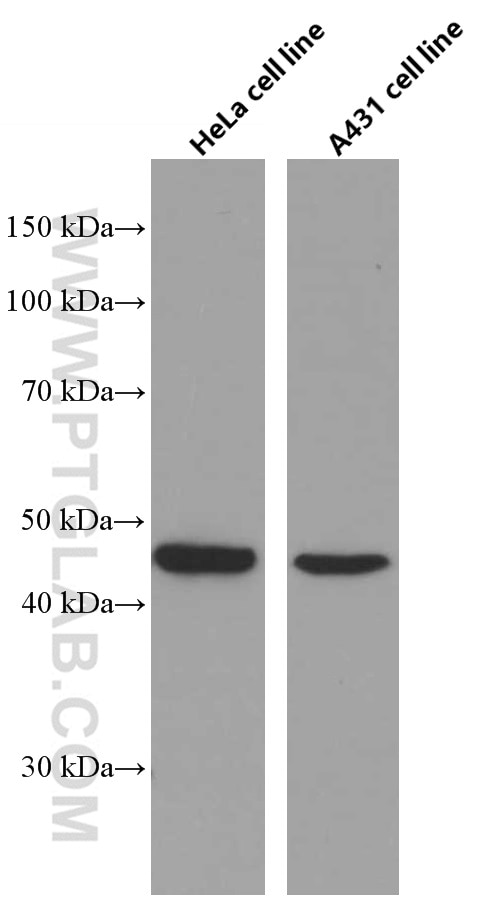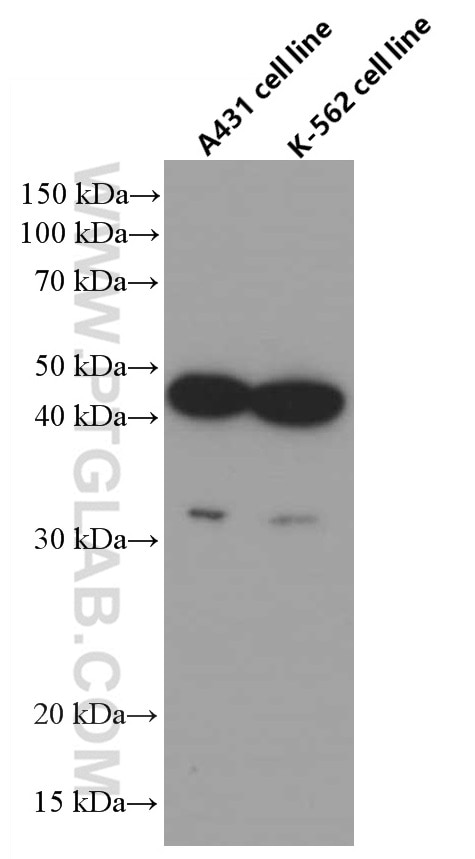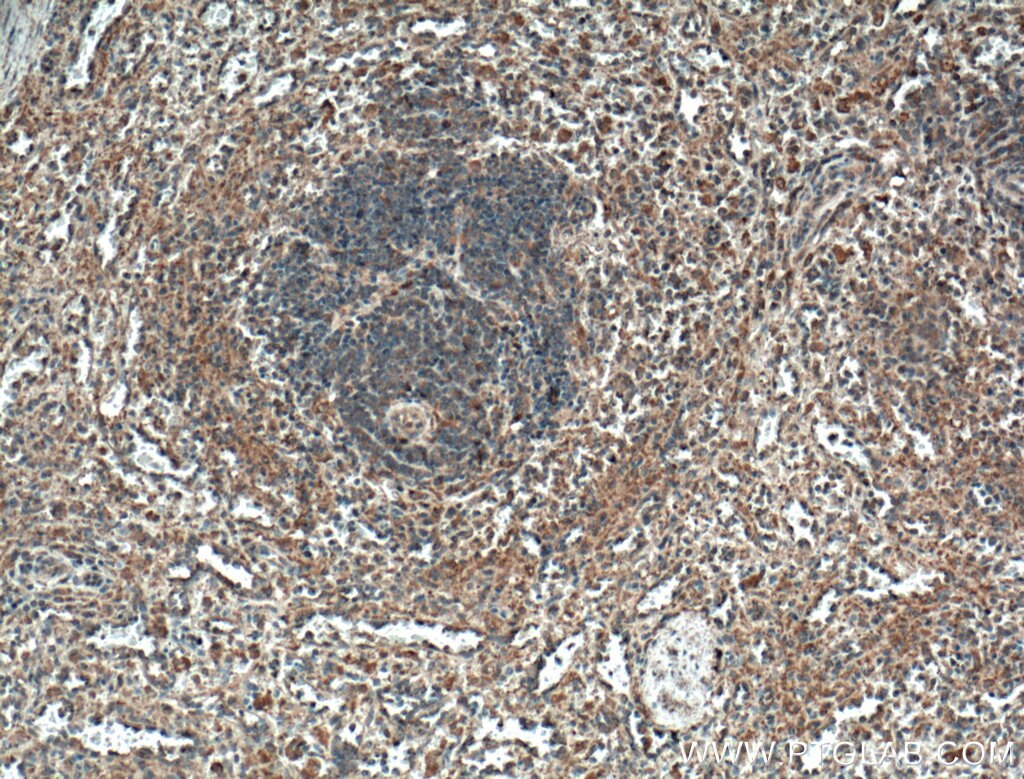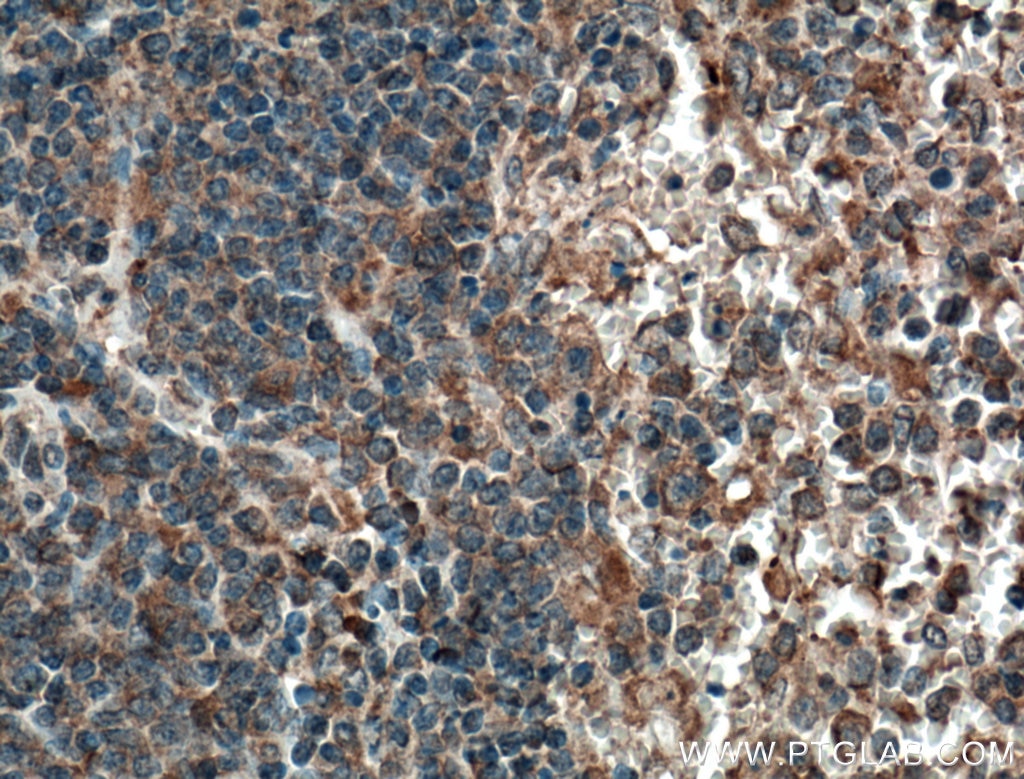Anticorps Monoclonal anti-CCRL2
CCRL2 Monoclonal Antibody for WB, IHC, ELISA
Hôte / Isotype
Mouse / IgG1
Réactivité testée
Humain
Applications
WB, IHC, ELISA
Conjugaison
Non conjugué
CloneNo.
2C1E11
N° de cat : 66611-1-Ig
Synonymes
Galerie de données de validation
Applications testées
| Résultats positifs en WB | cellules HeLa, cellules K-562 |
| Résultats positifs en IHC | tissu splénique humain, il est suggéré de démasquer l'antigène avec un tampon de TE buffer pH 9.0; (*) À défaut, 'le démasquage de l'antigène peut être 'effectué avec un tampon citrate pH 6,0. |
Dilution recommandée
| Application | Dilution |
|---|---|
| Western Blot (WB) | WB : 1:1000-1:6000 |
| Immunohistochimie (IHC) | IHC : 1:400-1:1600 |
| It is recommended that this reagent should be titrated in each testing system to obtain optimal results. | |
| Sample-dependent, check data in validation data gallery | |
Applications publiées
| WB | See 4 publications below |
Informations sur le produit
66611-1-Ig cible CCRL2 dans les applications de WB, IHC, ELISA et montre une réactivité avec des échantillons Humain
| Réactivité | Humain |
| Réactivité citée | Humain |
| Hôte / Isotype | Mouse / IgG1 |
| Clonalité | Monoclonal |
| Type | Anticorps |
| Immunogène | CCRL2 Protéine recombinante Ag4045 |
| Nom complet | chemokine (C-C motif) receptor-like 2 |
| Masse moléculaire calculée | 344 aa, 40 kDa |
| Poids moléculaire observé | 47 kDa |
| Numéro d’acquisition GenBank | BC025717 |
| Symbole du gène | CCRL2 |
| Identification du gène (NCBI) | 9034 |
| Conjugaison | Non conjugué |
| Forme | Liquide |
| Méthode de purification | Purification par protéine G |
| Tampon de stockage | PBS with 0.02% sodium azide and 50% glycerol |
| Conditions de stockage | Stocker à -20°C. Stable pendant un an après l'expédition. L'aliquotage n'est pas nécessaire pour le stockage à -20oC Les 20ul contiennent 0,1% de BSA. |
Informations générales
Chemokine CC motif receptor-like 2 (CCRL2) is a seven-transmembrane domain receptor that shares structural and functional similarities with the family of atypical chemokine receptors (ACKRs) (PMID: 28743719). CCRL2 does not appear to be a signaling receptor, but may have a role in modulating chemokine-triggered immune responses by capturing and internalizing CCL19 or by presenting RARRES2 ligand to CMKLR1, a functional signaling receptors. CCRL2 has been found on almost all hemopoietic cells, including monocytes, macrophages, polymorphonuclear neutrophils (PMNs), T cells, dendritic cells, natural killer cells, and CD34+ progenitor cells, with PMNs expressing the highest levels (PMID: 15188357). CCRL2 is also expressed by barrier cells, such as lymphatic and blood endothelial cells and bronchial and intestinal epithelial cells (PMID: 29056935).
Protocole
| Product Specific Protocols | |
|---|---|
| WB protocol for CCRL2 antibody 66611-1-Ig | Download protocol |
| IHC protocol for CCRL2 antibody 66611-1-Ig | Download protocol |
| Standard Protocols | |
|---|---|
| Click here to view our Standard Protocols |
Publications
| Species | Application | Title |
|---|---|---|
Hypertension Statins Prevent the Deleterious Consequences of Placental Chemerin Upregulation in Preeclampsia | ||
PLoS Pathog Identification of viral SIM-SUMO2-interaction inhibitors for treating primary effusion lymphoma. | ||
Onco Targets Ther Oncogenic Role and Prognostic Value of MicroRNA-937-3p in Patients with Breast Cancer. | ||
Front Immunol Identification and validation of chemokine system-related genes in idiopathic pulmonary fibrosis |





